How do homeless people live in Hawaii
Categories: North America | Society
By Pictolic https://pictolic.com/article/how-do-homeless-people-live-in-hawaii.htmlSergey Anashkevich, a blogger from Sevastopol, writes: "I understand all the righteous anger that many people will have after reading this post ... Yes, indeed. The reality is that Hawaiian homeless people live much better than hard workers somewhere in the Russian outback. In direct physical monetary terms.
Homeless people in Hawaii are so covered in chocolate and protected by the island's authorities that it is the most homeless state in the USA. The concentration of homeless people here is 6 (!) times higher than the national average. 6 times — 1.2% of the total population! Moreover, a third of all homeless people migrated to Hawaii from other states in the last 10 years.
Ask why this is happening? The fact is that this state has a special sense of humanity towards the homeless, taking care of them in every possible way, helping them, providing everything that homeless people need, and simply not letting the homeless die.
And now attention — on average, the authorities of the state of Hawaii spend $ 700 per month on one homeless person. Here it is, the real minimum living wage. Almost 42 thousand rubles. I wonder how many people in Russia receive wages less than this amount. Not being homeless at the same time, not idling, but working and working hard..."
(6 photos in total)

Source: LiveJournal/aquatek-filips
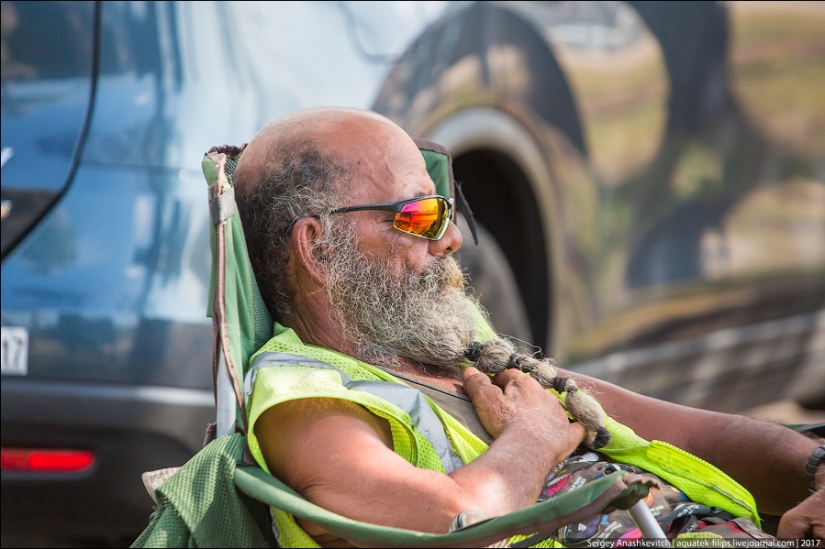
It is clear that homeless people are incredibly high in Hawaii. And the sun to you, and the ocean, and no cold and frost. You don't have to worry about where to live at all, because you can live absolutely anywhere — you won't freeze.
But, despite the highly humane attitude of the authorities towards these comrades, this situation suits them less and less economically, because homeless people on the island breed faster than the population grows…
Do you know what the authorities found a way out? They are ready to send any homeless person... on a journey!
And since you can only go on a trip from Hawaii by plane, homeless people are paid for an air ticket, as well as procedures for sanitizing and bringing the appearance into a decent one so that a person is allowed on the plane. True, one way. In other words, they are trying to evict homeless people from the island in this way.
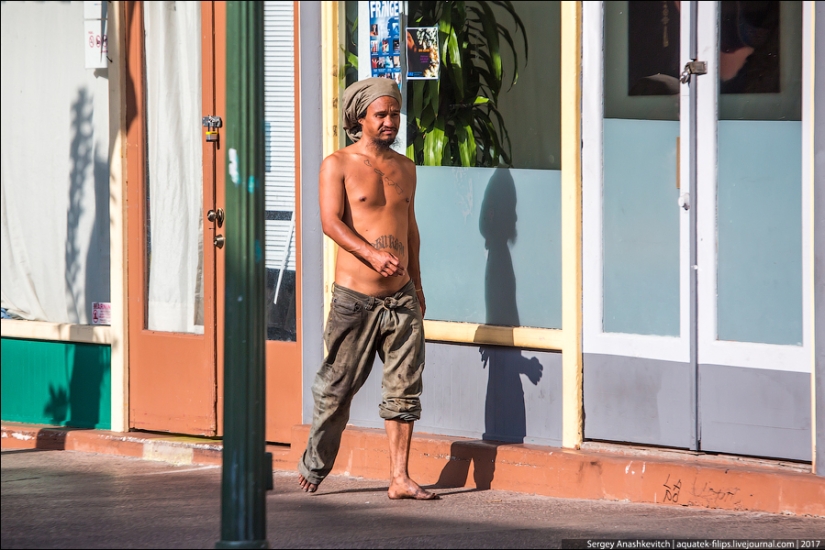
American legislation does not allow to evict people from the state by force, so we had to create a program in which particularly unprofitable residents themselves will voluntarily move somewhere else.
Restrictions on participation in the "Travel to the Mainland" program are minimal: any Hawaiian homeless person who does not suffer from infectious diseases and is ready to sign a document confirming that the departure will be completely voluntary will be able to take advantage of the offer. However, you can fly to the continent for free strictly once: you can fly away, return at your own expense and then you will not be able to fly away again. Formally, the authorities explain that the program was invented in the care of the homeless themselves. Now they will be able to safely move to their relatives and friends, who will help them get back on their feet.
But by and large, no one particularly hides that the state expects to seriously save budget money in this way. It is much cheaper to wash a homeless person once and put him on a plane than to keep him for the rest of his life.

In general, Hawaii was not the first to come up with how to "legally" evict homeless people.
The first to come up with such a thing was in New York, where back in 2007 the authorities began buying local homeless bus, train and even plane tickets. Everything is free, but only one way. Naturally, all this is presented not as the expulsion of homeless people for the sake of economy, but as a noble concern of the city for the reunification of families.
For almost ten years, several hundred homeless people have been sent from New York every year. It costs the city budget half a million dollars a year, but the mayor's office assures that the costs pay off — the annual savings from each "reunited family" in expensive New York reaches 36 thousand dollars.
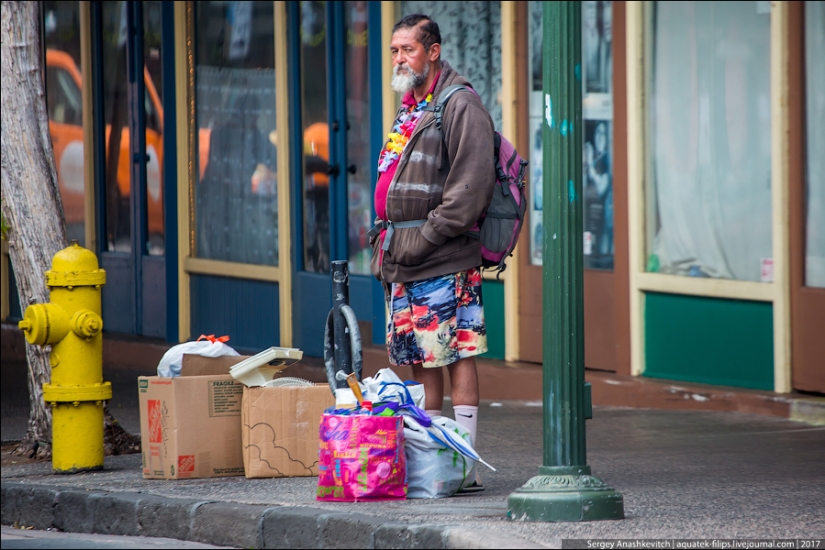
The experience of New York began to gradually spread across the United States. Programs for the free departure of homeless people began to be accepted in other large cities like San Francisco or in areas with a pleasant climate that stimulates the influx of vagrants, such as Florida resorts. Then they guessed to expel the homeless in the capital of Louisiana, Baton Rouge.
There, in the harsh South, the deputies turned out to be less sophisticated in humanistic hypocrisy than their New York colleagues, so at first they honestly called the program "Clean Sweep" (Clean Sweep), but they came to their senses in time and renamed it "Hope". And in general, everywhere the authorities diligently emphasize that they give free tickets only to those homeless who can confirm that they have somewhere to go. But how strictly this rule is observed in reality is unknown. Especially when you consider that almost everywhere the supply of homeless people with free tickets is entrusted to the police.
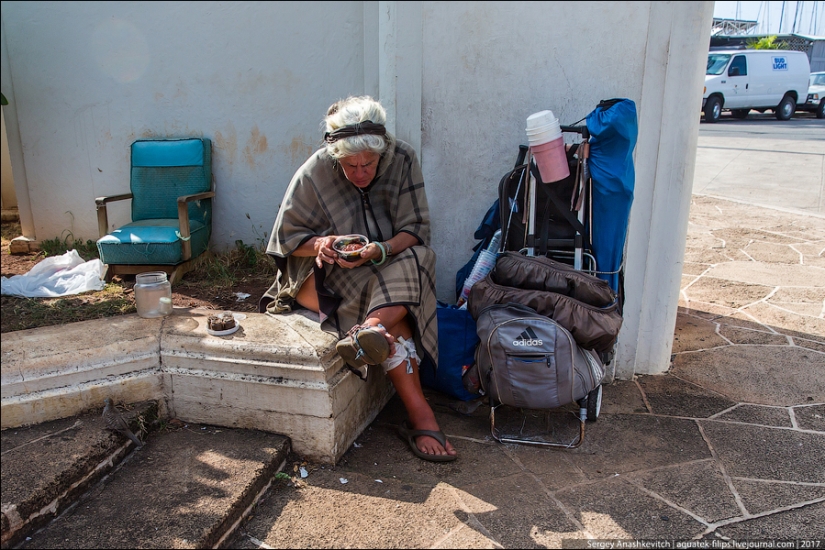
In general, I wonder how soon all states will adopt this program and the cycle of homeless people in the United States will circle. Then the homeless in the States will have a pure buzz — and they will ride from state to state for free at the expense of local budgets.
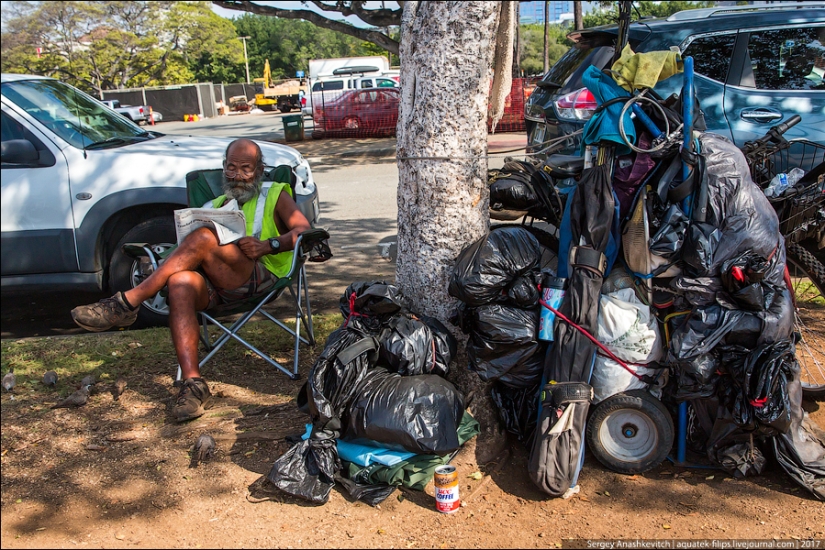
How do you like the life of American homeless people?
Keywords: Homeless | Hawaii | USA
Post News ArticleRecent articles

The world knows this woman as Mona Fandey, but her real name is Nur Mazna Binti Ismail. She took a euphonious pseudonym in her ...

Why not just meet at a charity sale and second-hand from pleasant surprises like jewelry Swarovski to creepy dolls and a full game ...
Related articles

Bikers since the mid-twentieth century terrified the inhabitants of "one-storied America". The roar of the engines meant one thing ...

Can you tell what snakes, ninja shurikens, eels and grenades have in common? It's simple — all this is periodically seized ...

Madonna, Johnny Depp, Annie Lorak, Lady Gaga, Olga Buzova, Philip Kirkorov, Leonardo DiCaprio, what unites these stars of domestic ...

We don't know how they do it, but these photographs prove incredible. Cats can synchronize with each other. It's a fact little ...